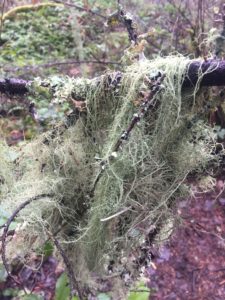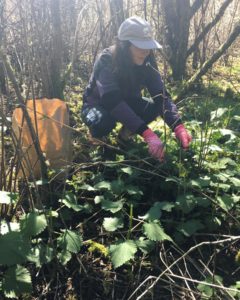As we move through spring, I am noticing a shift in colour. Early in the season, as the world awakened from the quiet slumber of winter, it seemed as if all I saw were vibrant purply-blue and yellow flowers – daffodils, grape hyacinth, periwinkles, Oregon grape flowers, English bluebells, dandelions, forsythia, crocus, skunk cabbage flowers, maple blossoms, rosemary, cornflowers… the list goes on. In the past few weeks, the marginal land colonised by California poppies has transformed into a sea of orange, and self-seeded calendula has become a welcome companion on my neighbourhood strolls. On Mother’s Day, we walked through a field of camas during golden hour and the yellow stamens were absolutely glowing against the deep blue-violet petals.
More recently, though, this colour palette appears to be giving way to another, dominated in particular by white blooms. Elderflowers, horse chestnut, arbutus, dogwood, serviceberry, trailing blackberry, common yarrow, miner’s lettuce, false Solomon’s seal, starflower, and Douglas iris are just a handful of what I’ve seen. I’m chomping at the bit to get my hands on some recently-emerged hawthorn flowers to make a little medicine for the heart.
Obviously these are just generalisations based on my observations as I’ve been toodling around outside. Nonetheless, I wonder if what I have noticed is related to our native pollinators and what attracts them through the season. Perhaps one day I’ll find an anthecologist to ask. For now, though, pondering these kinds of things is a wonderful thought exercise, and the magical secrets of nature’s perfect evolution persists.








